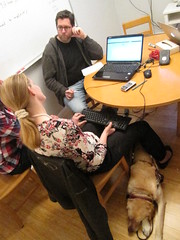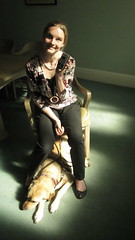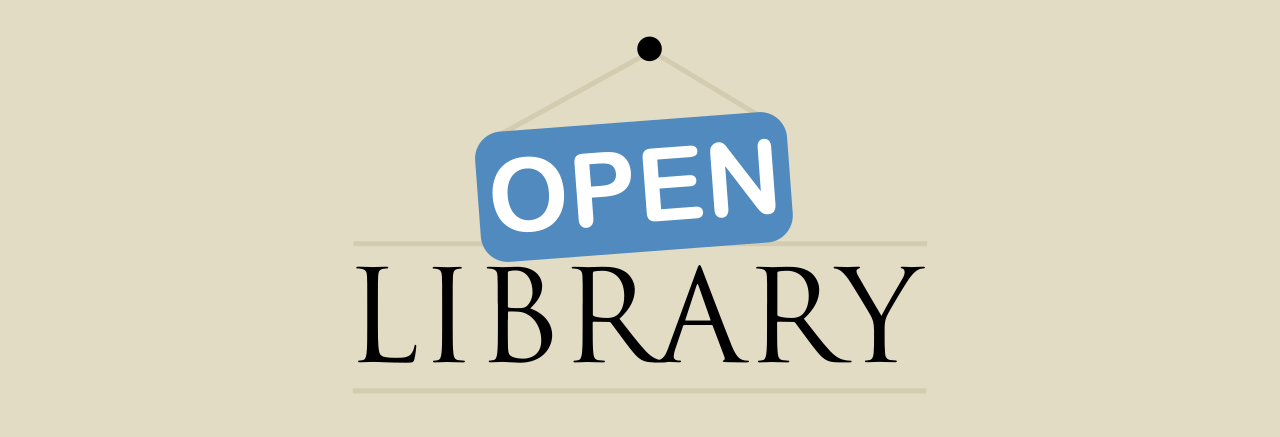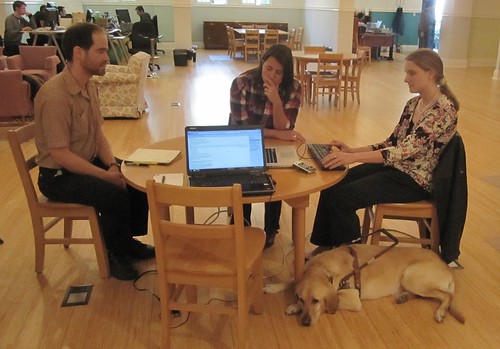More than doubling the number of books available to print disabled people of all ages, today the Internet Archive launched a new service that brings free access to more than 1 million books – from classic 19th Century fiction and current novels to technical guides and research materials – now available in the specially designed format to support those who are blind, dyslexic or otherwise visually impaired.
Part of this announcement was to tell people about the brand new, rebuilt Open Library, which came online yesterday. Knowing that the site would be a new front door to books for print-disabled and visually impaired visitors, we had to make sure that it was accessible, both at the code level, and on all sorts of browsers and devices.
Luckily, one of the team, Lance Arthur, is a total markup rockstar who has been working to web standards throughout the reconstruction of the Open Library site. But, we wanted to make sure, so we’ve worked with several people, tools and organizations over the last month or so to test our accessibility from a variety of angles.
This is a picture of Mike McCabe (Internet Archive staffer responsible for generating these new accessible DAISY files), me and the fabulous Jessie Lorenz, who worked with us on what it was like to use Open Library as a blind person. It was amazing to watch her jump around the site using the keyboard and some screenreading software called Jaws. A entirely different experience to what I’m used to. Jessie suggested a number of straightforward tweaks that we could make to help make the site more navigable. For example:
- Make sure we have title/alt attributes on everything,
- Add the total result count for a search results page into the <h1> so she didn’t have to go search for it;
- Describe the graph on the Subject pages in plain English (before all the numbers) – “There is a graph on this page that displays the publishing history for this subject. On the x-axis is time, and on the y-axis is the count of editions published.”
- Make sure we labelled the top/bottom search fields differently, even though they do the same thing, and more.
Thank you, Jessie!


Jessie & Lance; Jessie and her lovely pup, Nacho
We also used the W3C Markup Validation Service to check out our pages at the code level, and have passed with flying colours for virtually every page on the site, and made sure all understood and listened to what Open Library sounds like, through the use of a simulator for the Jaws Screen Reader software, which is unfortunately very expensive.
So, back to the announcement we made this morning. The easiest way to access the over 1 million accessible books on Open Library is to head for our new “Accessible Books” subject page that displays them all or to search within them. (There’s a link to that subject page on the new Open Library home page.)
There’s more information about the special DAISY accessible eBook format in the Open Library FAQ, and here’s a useful video from Open XML that explains more about being visually impaired and DAISY:
We’re really excited – not just about the new Open Library site finally being revealed to all, but to be a part of delivering a massive, new, free resource to so many people. It was also a pleasure to collaborate with lots of other Internet Archive staff, so thank you to Brewster Kahle, Jon Hornstein, Mike McCabe, Hank Bromley, Alexis Rossi, Raj Kumar, Sam Stoller, Laura Milvy, Jeff Kaplan, Karen Coyle, Mary Murrell, Calvin Yee, Ralf Muehlen and Michael Ang for all your awesome support.


Pingback: Michael Ang » Blog Archive » Over 1,000,000 Digital Books Available Free to the Print-Disabled
Pingback: En miljon digitala talböcker « Peter Alsbjers blogg!
Pingback: 1 Juta Lebih Buku Digital Tersedia Secara Gratis Untuk Tunanetra | kurungsiku.web.id
Pingback: How do publishing houses allow libraries to lend their books? | Our Pets
Pingback: How do publishing houses allow libraries to lend their books? | Our Pets
Pingback: Over 1 Million Digital Books Now Available Free to the Print-Disabled | Daniel's Blog